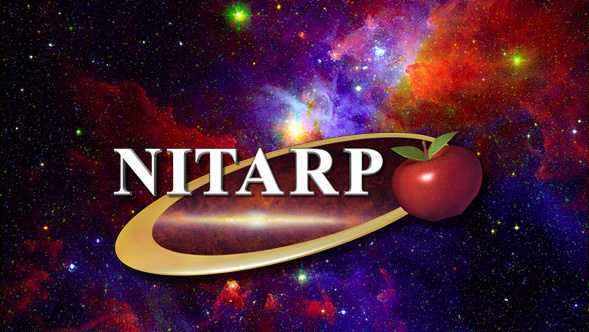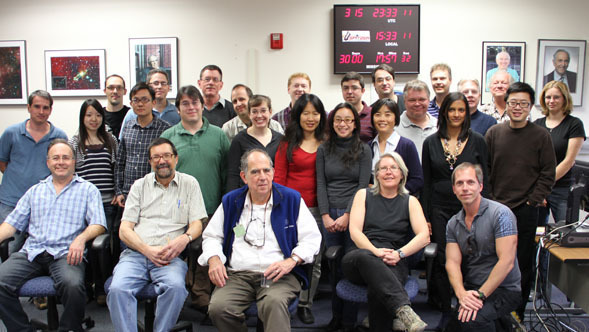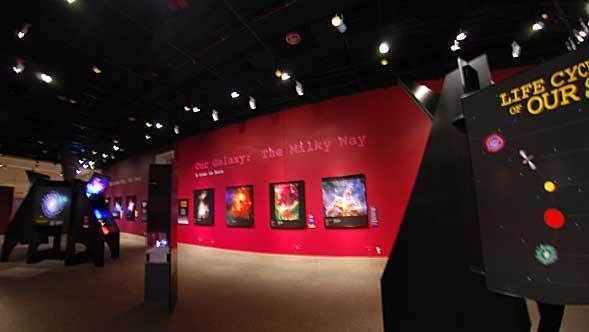
By Luisa Rebull | October 31st, 2011
I have the pleasure of announcing the 2012 class of educators for NITARP, the NASA/IPAC Teacher Archive Research Program! NITARP, as I've mentioned before, is an effective and inspiring way to get authentic research experiences into classrooms across the United States. We partner professional scientists with (primarily) high school teachers, carry out an original research project, and present the results at the semi-annual meeting of the American Astronomical Society. The teachers incorporate the experience into their classrooms and share their experience with other teachers.
This program, to the best of our knowledge, is completely unique in the following two important ways: (1) each team does original research using real astronomical data, not canned labs or reproductions of previously done research; (2) each team writes up the results of their research and presents it at an American Astronomical Society meeting (the AAS is the professional organization for astronomers in the US). Each team also presents the educational results of their experience in the program.
This year (2011), we had 12 educators of a wide variety of backgrounds. We included for the first time a representative of the amateur astronomy community -- these non-traditional educators often reach thousands of people per year, and thus provide us another venue to convey the excitement of real research to the general public. The teams are currently working on six different posters on their science and education results to take to the 219th AAS meeting, planned for January 2012 in Austin, TX. I'll have another blog posting on the broad spectrum of projects and results they're presenting.
We select teachers for this program competitively from a nation-wide application process. This year, we had more teachers than ever apply -- about four times as many teachers applied as we had spots. The competition was fierce. We also have a special program for one teacher to work on SOFIA data. Here for the first time ever, is the brand-new list of 19(!!) teachers to start with their teams in January 2012! They are non-traditional educators from museums and traditional classroom high school teachers, middle school teachers and community college educators. They are from big cities and small towns, the contiguous US and Hawaii. They will study nearby things and far away things, at wavelengths from the optical through microwaves. Look for results of their projects in January 2013!!
- Team working with Dr. Luisa Rebull (SSC)
- Peggy Piper (Lincoln-Way North High School, Frankfort, IL) - teacher mentor for team
- Jacqueline Barge (Walter Payton College Prep High School, Chicago, IL)
- Robert Bonadurer (Daniel M. Soref Planetarium at the Milwaukee Public Museum, Milwaukee, WI)
- Debbie French (New Philadelphia High School, New Philadelphia, OH)
- Lauren Novatne (Reedley College, Reedley, CA)
- Russ Laher (SSC, Pasadena, CA) - IPAC staff participant
- Mark Legassie (Raytheon and SSC, Pasadena, CA) - staff participant
- Team working with Dr. Varoujan Gorjian (SSC/JPL)
- John Blackwell (Phillips Exeter Academy, Exeter, NH) - teacher mentor for team
- Wendy Curtis (Waynflete School, Portland, ME)
- Thomas Doyle (Dodd Middle School, Freeport, NY)
- Pamela Thompson (Monrovia High School, Monrovia, CA)
- Team working with Dr. David Ciardi (NExScI) and Dr. Steve Howell (NASA/Ames)
- Sally Seebode (San Mateo High School, San Mateo, CA) - teacher mentor for team
- Joseph Childers (Boonshoft Museum of Discovery, Dayton, OH)
- Cindy Melton (Coral Glades High School, Coral Springs, FL)
- Matthew McCutcheon (Latin School of Chicago, Chicago, IL)
- Caroline Odden (Phillips Academy, Andover, MA)
- Meca Lynn (IPAC, Pasadena, CA) - IPAC staff participant
- Team working with Dr. Ranga-Ram Chary (Planck)
- Chelen Johnson (Breck School, Minneapolis, MN) - teacher mentor for team
- Christopher Border (Maui Prepartory Academy, Lahaina, HI)
- Kathryn O'Connor (Lokelani Intermediate School, Kihei, HI)
- Denise Rothrock (Madisonville High School, Madisonville, TX)
- Teacher working with Dr. Michael Werner (JPL) and Dr. Raghvendra Sahai (JPL)
- Tim Spuck (Oil City Area High School, Oil City, PA, and Einstein Fellow, NSF)
The Spitzer Science Center (SSC) and the NASA Infrared Processing and Analysis Center (IPAC) are leading this program. We use archival data from the Spitzer Space Telescope, the NASA/IPAC Extragalactic Database (NED), the NASA/IPAC/NExScI Star and Exoplanet Database (NStED), the NASA/IPAC Infrared Science Archive (IRSA) and other NASA archive holdings. Our funding comes from the NASA Astrophysics Data Program (which is where professional astronomers go for Spitzer archival research), SOFIA education, and the other archives at IPAC.
 11-11-11: At 3000 and Counting!
11-11-11: At 3000 and Counting!
 See Spitzer at the Smithsonian!
See Spitzer at the Smithsonian!



